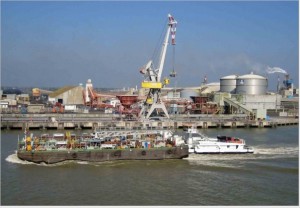The level of acid inside a nitrogen gas separator of a nitric acid unit of a Seveso-classified nitrogenous fertiliser plant increased at 9:52 a.m. due to an insufficient flow rate of the extraction pump. The high-level alarm (80% of the separator’s filling capacity) sounded in the control room at 9:53 a.m. The shift operators attempted to start the emergency extraction pump to control the level, but were unsuccessful. At 10:00 a.m., unusual noises heard coming from the compression train prompted the operators to manually secure the unit although the separator’s ‘very-high-level’ safety system had not triggered. This delay caused nitric acid in solution to flow into the compressor and release a reddish cloud of 300 kg of nitrogen oxide (NOx; irritant gas in high concentrations) into the atmosphere. The site’s employees sought refuge in a confined space. However, three employees of a neighbouring company had their faces irritated by the gas. A physical examination by a doctor confirmed superficial chemical burns. This appears to prove that nitric acid was carried in the NOx releases and in the piping connecting the separator to the compressor.
The ‘very high level’ detector on the safety system was not working due to an electrical failure. The second extraction pump failed to start due to a malfunction of the PLC. Both components had last been serviced a year earlier (April 2012). An analysis of the process readings measured during the accident showed that the separator’s analogue level detector had measured a filling rate of no more than 79% whereas the nitric acid contained in the piping and the cloud confirmed a filling rate of more than 100%. This level detector, which was used to control the flow rate of the extraction pump, had not been serviced in 16 months. The operator explained that the detector was not periodically inspected because it was used to manage the process for rapidly detecting failures or drifts. The operator improved its procedure for alerting neighbouring businesses in the event of accidents or incidents at its facilities.




